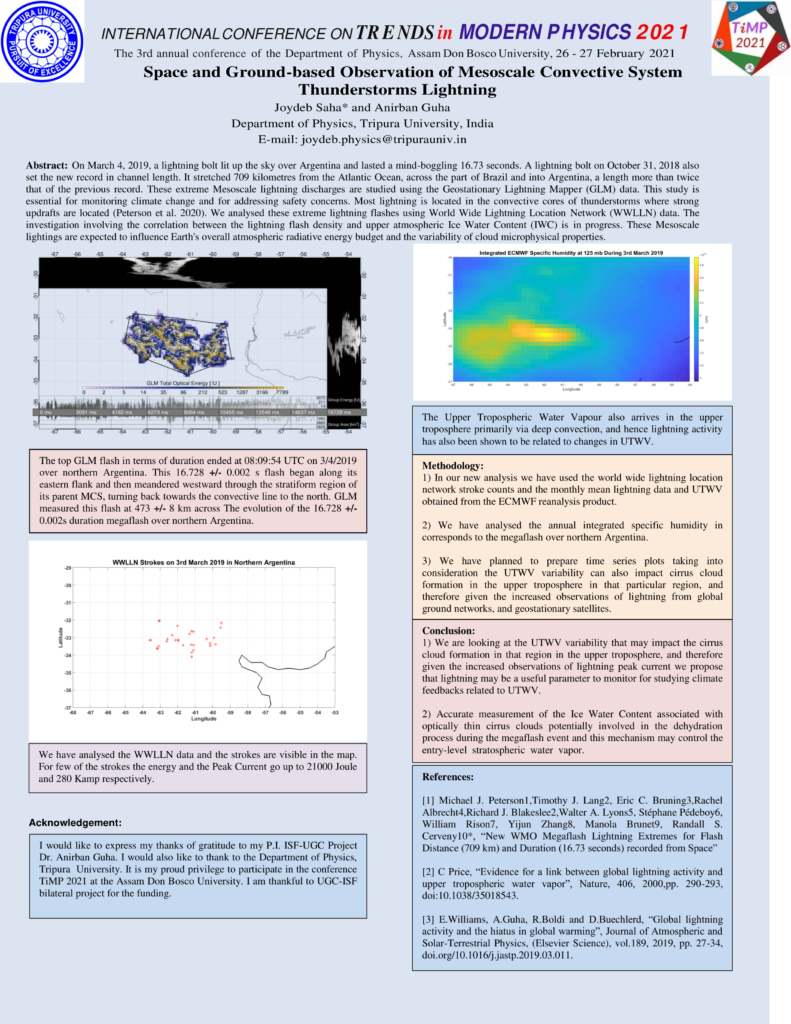
Space and Ground-based Observation of Mesoscale Convective System Thunderstorms Lightning
On March 4, 2019, a lightning bolt lit up the sky over Argentina and lasted a mind-boggling 16.73 seconds. A lightning bolt on October 31, 2018 also set the new record in channel length. It stretched 709 kilometres from the Atlantic Ocean, across the part of Brazil and into Argentina, a length more than twice that of the previous record. These extreme Mesoscale lightning discharges are studied using the Geostationary Lightning Mapper (GLM) data. This study is essential for monitoring climate change and for addressing safety concerns. Most lightning is located in the convective cores of thunderstorms where strong updrafts are located (Peterson et al. 2020). We analysed these extreme lightning flashes using World Wide Lightning Location Network (WWLLN) data. The investigation involving the correlation between the lightning flash density and upper atmospheric Ice Water Content (IWC) is in progress. These Mesoscale lightings are expected to influence Earth’s overall atmospheric radiative energy budget and the variability of cloud micro-physical properties.
